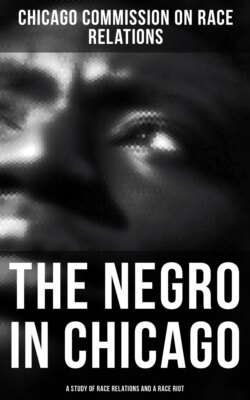Читать книгу The Negro in Chicago - A Study of Race Relations and a Race Riot - Chicago Commission on Race Relations - Страница 37
1. NEIGHBORHOODS OF UNORGANIZED OPPOSITION
ОглавлениеIn Certain West Side neighborhoods white property owners objected to the expansion of the principal Negro residence area of that section.
The pastor of the Negro Presbyterian Church on Washington Boulevard, who came to Chicago in 1919, bought the houses at 2006 and 2008 Washington Boulevard, in which white people had formerly lived. He moved into one of them in May, 1919, and both he and his tenants in the other house received warning letters advising them to move or take the consequences. The last of these was received during the riot in July, 1919. No attention was paid to them.
During the riots little trouble was experienced by the Negroes in the West Side district, who generally remained in their own houses and neighborhoods. Some became involved in clashes on their way to or from work, but there was no serious clash.
The district west of Cottage Grove Avenue and south to Sixty-third Street in Woodlawn is rather sparsely built up, most of the buildings being one- and two-family houses. Numbers of white people in the neighborhood believe that the district has been blighted because of the occasional presence of Negroes.
On the North Side some hostility to Negroes was shown during the 1919 riot. One Negro, who had lived on North Franklin Street for five years and in Chicago for thirty years, told of having been spit at by rowdy Italians, and on another occasion threatened with shooting by young roughs in a passing automobile. White neighbors, however, intervened. Under pressure of the riot excitement, some Italian children pushed through windows and doors pictures of skulls and coffins inked in red. At the time of the riot Eli Bates House issued a circular deploring race hatred and appealing for order and fairness.
Although the few Negroes living in the Lake Park Avenue area[19] have experienced little opposition in their present homes, there has been no Negro expansion there. The colony, has in fact, dwindled in size since 1910. It is made up largely of Negroes who were house servants for white families near-by or worked in the hotels of the district.
Negroes of this colony are barred from all white restaurants in the district except one place conducted by a Greek. In three of the motion-picture houses they are not allowed to sit in the best seats. In one of these theaters a sign reads, "We reserve the right to seat our patrons to suit ourselves." Negroes are permitted in the balcony or in the rear seats of the main floor.
On Langley, St. Lawrence, and adjoining streets south of Fifty-fifth Street there is considerable friction resulting from the presence of Negroes.
There are residence districts of Chicago adjacent to those occupied by Negroes in which hostility to Negroes is so marked that the latter not only find it impossible to live there, but expose themselves to danger even by passing through. There are no hostile organizations in these neighborhoods, and active antagonism is usually confined to gang lawlessness. Such a neighborhood is that west of Wentworth Avenue, extending roughly from Twenty-second to Sixty-third streets. The number of Negroes living there is small, and most of them live on Ada, Aberdeen, and Loomis streets, south of Fifty-seventh Street. In the section immediately west of Wentworth Avenue and thus adjoining the densest Negro residence area in the city, practically no Negroes live. In addition to intense hostility, there is a lack of desirable houses. Wentworth Avenue has long been regarded as a strict boundary line separating white and Negro residence areas. The district has many "athletic clubs."[20] The contact of Negroes and whites comes when Negroes must pass to and from their work at the Stock Yards and at other industries located in the district. It was in this district that the largest number of riot clashes occurred.[21] Several Negroes have been murdered here, and numbers have been beaten by gangs of young men and boys. A white man was killed by one of two Negroes returning from work in that district, who declared that they had been intimidated by the slain man. Speaking of this district, the principal of the Raymond School, a branch of which is located west of Wentworth Avenue, said that antagonism of the district against Negroes appeared to have been handed down through tradition. He said:
We get a good deal of the gang spirit in the new school on the other side of Wentworth Avenue. There seems to be an inherited antagonism. Wentworth Avenue is the gang line. They seem to feel that to trespass on either side of that line is ground for trouble. While colored pupils who come to the school for manual training are not troubled in the school, they have to be escorted over the line, not because of trouble from members of the school, but groups of boys outside the school. To give another illustration, we took a little kindergarten group over to the park. One little six-year-old girl was struck in the face by a man. A policeman chased but failed to catch him. The condition is a tradition. It is handed down.
